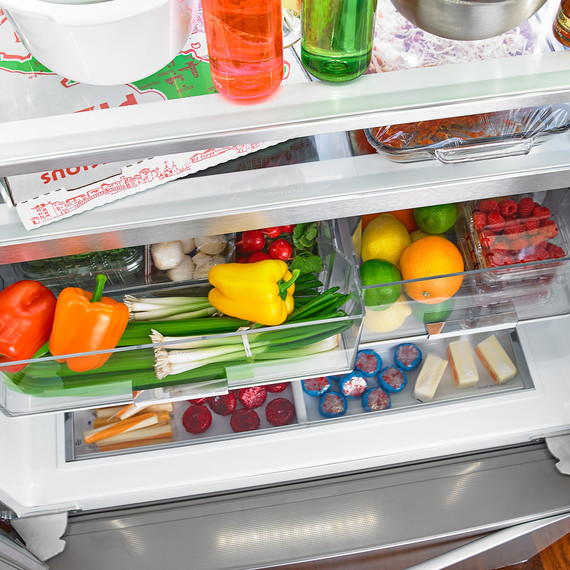The Proper Way to Use and Organize your Refrigerators Crisper Drawer
May 15, 2019
What to store Where
Do you know how to use the crisper drawers in your fridge? If not, you’re not alone! While crisper drawers might seem like the perfect place to store bread or odds-and-ends that don’t fit on refrigerator shelves, they’re actually meant for fresh produce, and when used correctly, can extend the life of your fruits and vegetables. I’m always looking for a way to save money and throwing away food is my pet peeve, so I was interested on how they work
knowing how to properly use your humidity settings on your crisper drawer will help your fruits and veggies last longer. You can set the humidity from high to low on most fridges, so set one drawer to high humidity and one to low.

How They Work
Crisper drawers offer a more humid environment than the rest of the refrigerator. Most are adjustable to either a high or low humidity with a slider on the inside of the drawer that opens or closes a small vent in the drawer. It’s all about the airflow in and out of the drawer. The high humidity setting closes the vent, shutting the air off and producing more humidity. Low humidity means that the vent is completely open and air can move freely. If your drawers don’t have any controls, they are simply high-humidity crispers. If you have two crisper drawers, it’s best to separate them into high and low humidity so you can store all kinds of produce.
Top drawer High Humidity
This drawer should contain thin-skinned or leafy vegetables that are prone to wilting or losing moisture quickly, such as asparagus, fresh herbs, and greens. Deputy food editor Greg Lofts says, “I wash, spin dry, and wrap lettuce in clean kitchen towels as soon as I get home and store them in the crisper drawer. Lettuces stay crisp and fresh much longer that way than if you just leave them in the clam-shell container or plastic bag. Plus, they’re clean, dry, and ready to eat whenever I want a salad.”

I love to add these green saver crisper inserts from the Container store they keep my food from spoiling faster than I’d like.

I also love these green saver containers that do the same thing only on a smaller level they work wonders on Strawberries!
Lower Drawer low humidity

You should put anything that can rot in the low humidity crisper drawer. This includes fruits and veggies that emit ethylene gas like apples, pears, avocados and most fruits. Ethylene gas emits from certain fruits (and some vegetables) and it causes many foods to ripen and expire faster. The open vent in the low humidity setting allows the gas to escape, which prevents the fruits from descending into the rotten stage too quickly. If you have three drawers I like to put my cheese and tortillas in that drawer, as does the stylist of the container store as you can see in their photo above.
what to never store in your Refrigerator
Onions and garlic hello the smell, it seems like it infused all the things that sit around them, so keep them out of the crisper drawer the only exception is when I have chopped onion for meal prep and I use the fresh flip container below from the container store I’ve also seen them on Amazon. It keeps the onion smell contained in the container and I don’t need to chop onions two days in a row.

Tomatoes are the other thing that should never get near the fridge! The cold makes the texture mealy. Since tomatoes are some of my favorite summer foods, I have a cute white bowl on my counter so that i can see and eat what I have.
Last but not least potatoes, These should be kept in a cool dry place. I store mine in the bottom of my pantry. I do this for most of my clients as well. They will last a few weeks in your dark pantry.
Crisper Drawer hacks

last i want to talk about is keeping those crisper drawers clean. I line all my shelves and drawers with liners. Its so easy to wash the liners without having to take out the drawers! I also love to put open top organizers to separate fruits in the drawers, again supper easy to keep all the apples together and contained. Do you have any great tips I should know about?
